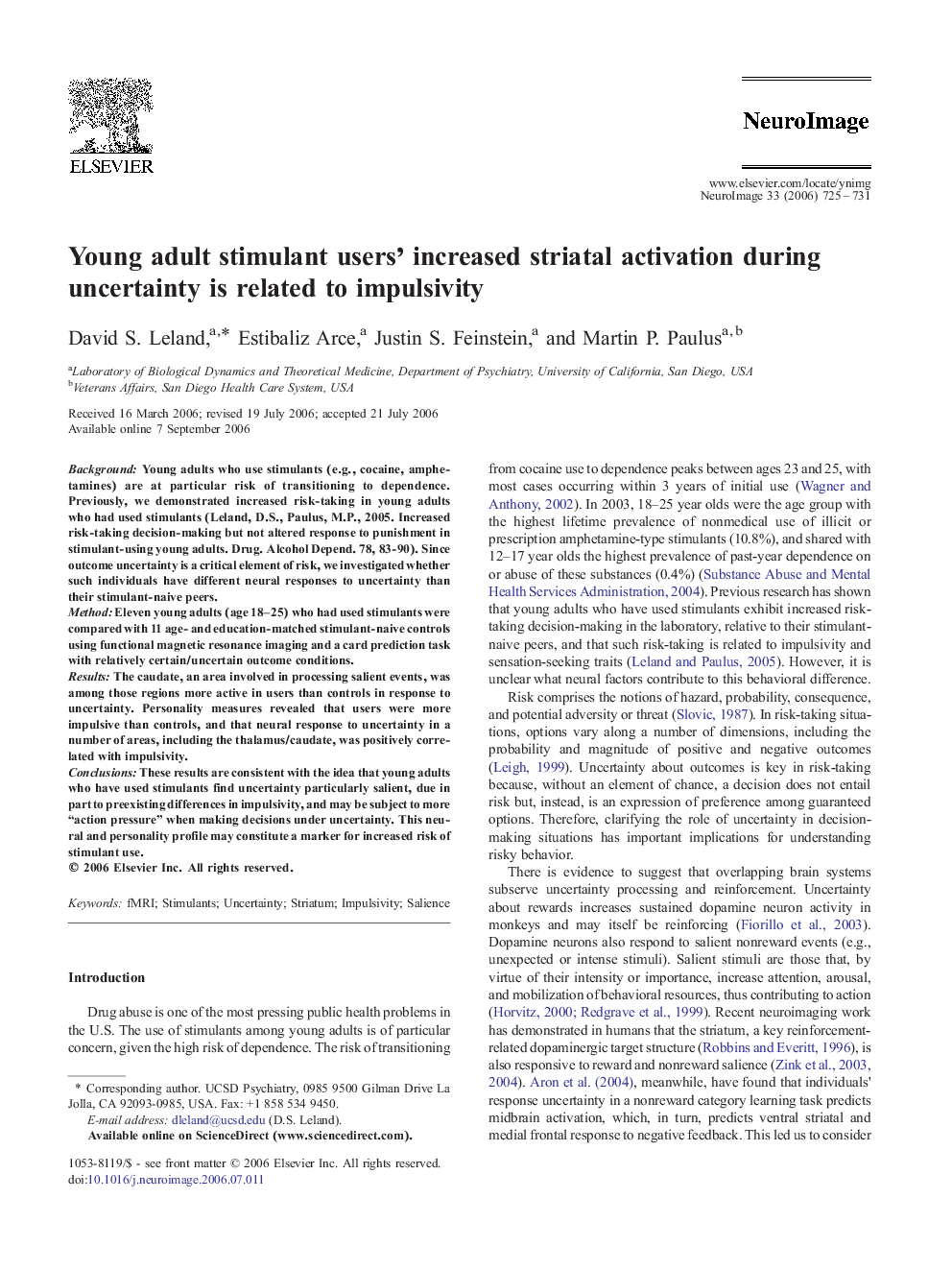| Article ID | Journal | Published Year | Pages | File Type |
|---|---|---|---|---|
| 3074469 | NeuroImage | 2006 | 7 Pages |
Background: Young adults who use stimulants (e.g., cocaine, amphetamines) are at particular risk of transitioning to dependence. Previously, we demonstrated increased risk-taking in young adults who had used stimulants (Leland, D.S., Paulus, M.P., 2005. Increased risk-taking decision-making but not altered response to punishment in stimulant-using young adults. Drug. Alcohol Depend. 78, 83-90). Since outcome uncertainty is a critical element of risk, we investigated whether such individuals have different neural responses to uncertainty than their stimulant-naive peers. Method: Eleven young adults (age 18–25) who had used stimulants were compared with 11 age- and education-matched stimulant-naive controls using functional magnetic resonance imaging and a card prediction task with relatively certain/uncertain outcome conditions. Results: The caudate, an area involved in processing salient events, was among those regions more active in users than controls in response to uncertainty. Personality measures revealed that users were more impulsive than controls, and that neural response to uncertainty in a number of areas, including the thalamus/caudate, was positively correlated with impulsivity. Conclusions: These results are consistent with the idea that young adults who have used stimulants find uncertainty particularly salient, due in part to preexisting differences in impulsivity, and may be subject to more “action pressure” when making decisions under uncertainty. This neural and personality profile may constitute a marker for increased risk of stimulant use.
